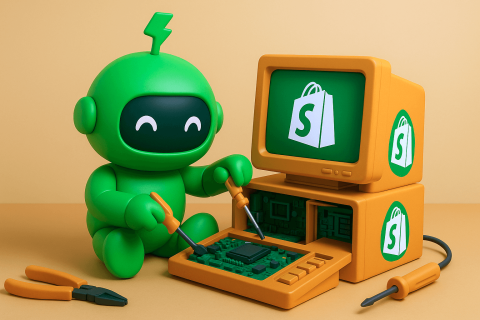
Marketing automation has become a core part of running a successful ecommerce store — not just for enterprise brands, but for growing Shopify merchants too. It’s how you keep customers engaged without sending every email or updating every tag by hand.
Shopify offers some marketing automation features out of the box, but the real power comes when you start layering in workflows, segmentation, and tools that work behind the scenes. In this article, we’ll walk through what marketing automation looks like on Shopify, which workflows make the biggest impact, and how to build systems that run without constant oversight.
What is marketing automation in Shopify?
Marketing automation is the process of using workflows, triggers, and rules to send messages or take action automatically. Instead of manually emailing a customer after every order or tagging VIPs by hand, you can set up logic that does it for you — reliably and at scale.
In practice, this includes things like abandoned checkout reminders, post-purchase follow-ups, loyalty rewards, and promotional emails. It also includes invisible operations like tagging, segmentation, and syncing to tools like Klaviyo, Slack, or Airtable. When these systems run in the background, your store stays responsive without needing to watch every order manually.
Shopify’s built-in marketing tools (and where they stop)
Shopify includes a few tools to help you start automating. You can create and send email campaigns from the admin, enable abandoned checkout reminders, and set up basic automation flows in some connected apps. These are helpful for smaller stores or basic use cases — but they don’t scale well.
You can’t build logic around customer tags, product categories, or long-term engagement. You can’t delay messages based on fulfillment events. And you can’t update customer data or push details to other platforms. As your marketing strategy grows, these limitations quickly get in the way.
Common marketing automation workflows for Shopify stores
Once you move beyond basic email blasts, the most effective automations tend to follow a few patterns.
Post-purchase flows
After a customer buys, you have a window to reinforce the relationship. You can use automation to send thank-you emails, request reviews, or offer reminders to restock based on timing. These flows improve retention without needing a dedicated team to track every order.
Customer segmentation
You can also use automation to tag customers based on behavior — like spending habits, product preferences, or purchase frequency. This helps you create more targeted campaigns later on. For example, tagging someone as a repeat buyer or high-value customer allows you to send VIP offers without pulling reports manually.
Promotional and seasonal campaigns
During key sales periods, automation can help you prepare faster. You might tag customers who’ve bought from previous seasonal sales or auto-tag first-time buyers to receive a follow-up when your next campaign goes live. This helps you move faster when it counts.
Retargeting and reactivation
If a customer hasn’t returned in 60 or 90 days, automation can flag them for re-engagement. You might trigger a personalized winback message or update their tags for inclusion in a paid ad campaign. These workflows run in the background — but help recover revenue you might otherwise miss.
Tools to automate your Shopify marketing
Several tools help you implement automation across different channels. Email marketing platforms like Klaviyo or Omnisend are great for sending campaigns and building flows around customer behavior. SMS tools like Postscript or Attentive help deliver time-sensitive offers through text. Shopify’s built-in options cover the basics, but they don’t go deep on logic, delays, or segmentation.
If you want to bring everything together — customer data, orders, tags, external systems — tools like Arigato give you control over the full marketing stack. You can use real Shopify data to trigger campaigns, tag customers, and sync updates across your toolset.
Build Shopify marketing automation workflows
Ideally, you should aim to create workflows that respond to nearly anything happening in your store. You can run automations on customer updates, order events, inventory levels, or product changes. That means you can tag new customers automatically, send VIPs special messages, or notify your team when a restock needs attention.
You can also delay or schedule actions — so you might wait seven days after fulfillment before sending a review request, or schedule promotional campaigns to go live before a big sale.
Explore marketing automation templates
To help you move fast, best in class Shopify automation tools, like Arigato include a prebuilt library of automation workflows, including a large number focused on marketing. These templates let you install ready-made logic for VIP tagging, loyalty follow-ups, seasonal segmentation, and more.
You can start with a template, test it on live data, and tweak the logic to match your goals. Whether you’re launching your first campaign or automating a more advanced retention flow, these examples give you a shortcut to something that works.
Marketing automation for Shopify TL;DR
Marketing automation helps Shopify stores grow without growing the workload. It gives you the ability to stay personal at scale — reacting to behavior, engaging repeat buyers, and following up when it matters most.
Shopify covers the basics. But if you want to automate how your marketing actually works — across customer data, fulfillment, segmentation, and communication — Arigato Automation gives you the structure and flexibility to build flows that drive real growth.